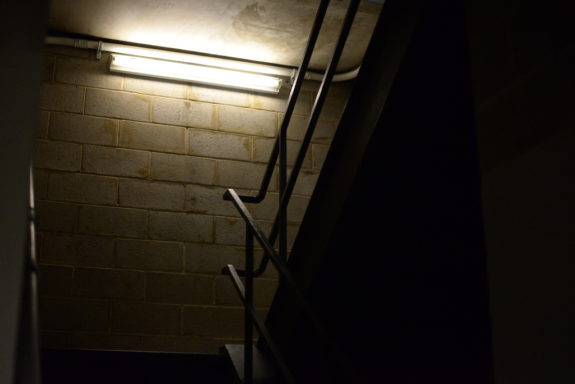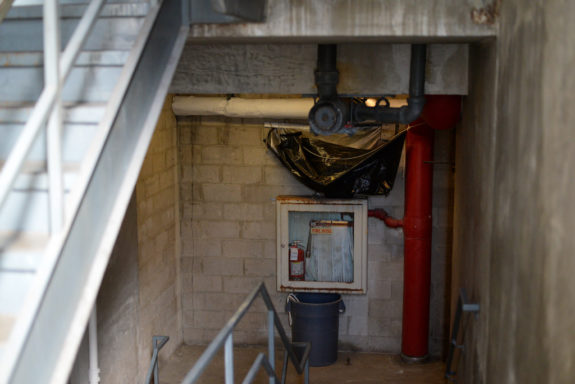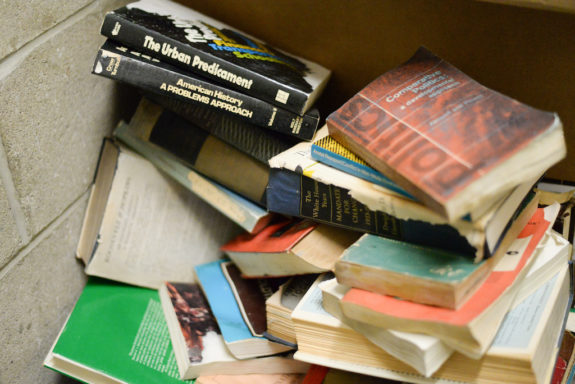One of them is just…better than the other.
The International Affairs Building is a fixture of Columbia’s campus, towering in bright concrete over Ancel Plaza and the Law Library. It possesses two main staircases, ensconced in protruding, rectangular columns (which one Bwogger has gallantly defended). However, despite being by all outside appearances identical, these two staircases are not created equal.
Let’s get the basics out of the way. One of the IAB’s staircases is genuinely nice: it’s painted in vibrant blues and whites, is kept clean and sleek, and even has six-foot-tall numbers on all its inside doors to denote the floors from the inside. Grids next to those doors serve as organizational aides for the various club meetings, event postings, and campaign flyers which in most other staircases around campus are tacked onto bulletin boards at random intervals and heights. In a word, it is everything you want from a staircase: bright, spacious, and easily navigated.

The IAB’s other staircase is not quite as nice.

It is unpainted. More than half of it between the fifth floor and the street exit on the fourth floor is unlit. For whatever reason, many of its entrances are in what can alternately be described as an airlock or walk-through-zoo-aviary style, wherein the unsuspecting visitor must pass through not one but two doors to access the stairway from the hallway or vice versa. No posters or notifications are tacked to the walls (except an ancient paper advertising writing help, fallen behind a fuse box) because so few people use the staircase. Why it remains neglected compared to its partner is unclear.

Located in one of those antechambers is a stack of old political science books, including an autobiography of Winston Churchill, a minute-by-minute account of the Kennedy assassination, and a history of the United States written by Charles Beard, which unfortunately cannot tell us much about modern US history because it was published in 1932 and Beard himself died in 1948. The books are nearly all water-damaged, and—as you might have guessed from the topics above—are mostly between five and six decades old, with a few outliers written in the 30s and 40s.

The rest of the IAB is sleek, wood-paneled, and with an abundance of natural light. Its second staircase is not. No representative of the staircase was available for comment to say why no one had finally got around to throwing a bucket of paint on the walls sometime in the past 50 years.
IAB images via Charlie Bonkowsky


 0 Comments
0 Comments